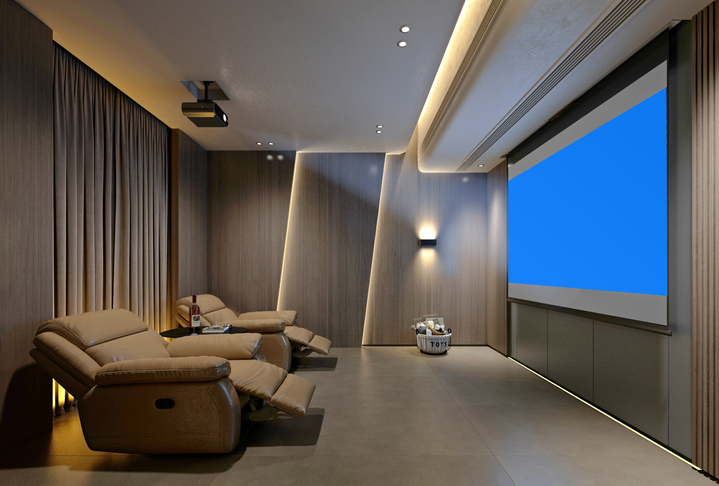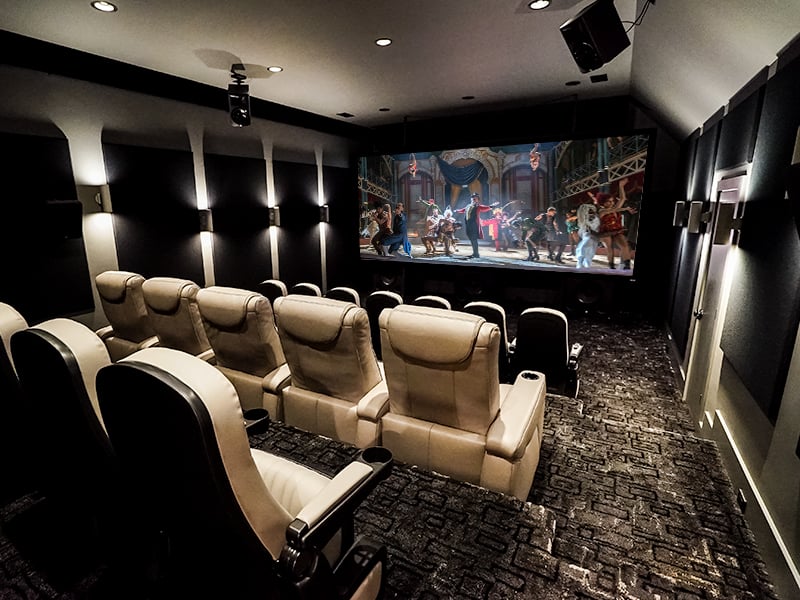Home Theater 101: Every Little Thing You Required to Know for a Motion Picture Experience in your home
Producing a home movie theater that matches the motion picture experience of a business theatre includes careful factor to consider of numerous parts, including screen option, sound systems, and area layout. Whether you are considering the ideal screen size or the complexities of border sound, recognizing these fundamentals is essential.
Choosing the Right Screen
When establishing a home cinema, picking the right display can make or break the seeing experience - home theater installation tampa. The display offers as the focal point of your configuration, influencing image quality, checking out angles, and total visual. Key factors to take into consideration consist of screen kind, resolution, and dimension
Initially, figure out the suitable display size based on your room measurements and seating distance. Next off, select between numerous screen kinds, such as fixed-frame, motorized, or retractable displays, each offering distinctive benefits.
Resolution is an additional crucial aspect. For a genuinely immersive experience, consider a display created for 4K and even 8K content, making sure intensity and clarity. Furthermore, think about the screen's gain, which impacts brightness and comparison; a higher gain can boost brightness in well-lit spaces, while a lower gain might be better for darker environments.
Picking Audio Equipment
Audio tools is a critical part of any type of home movie theater system, dramatically improving the total watching experience. The option of audio equipment can identify the depth, clarity, and immersion of sound, critical for producing a motion picture environment.
When choosing audio devices, take into consideration a surround stereo, which usually includes a receiver, several speakers, and a speaker. A 5.1 or 7.1 network system is suggested, where the first number represents the speakers and the 2nd the speaker, supplying an immersive soundscape. The receiver is the heart of the system, managing audio and video signals, and ought to sustain modern layouts like Dolby Atmos for an improved spatial experience.
Quality speakers are important; try to find designs that supply a balanced sound profile with excellent bass response. Floor-standing audio speakers can generate richer noise, while shelf options conserve space. In addition, consider wireless choices for ease of installation, although wired systems commonly deliver exceptional efficiency.

Optimal Seating Arrangements
Producing an ideal home movie theater experience pivots dramatically on optimal seating setups. The plan of seats plays an important role in both comfort and checking out top quality, directly impacting the general cinematic experience.
First, think about the display size and checking out distance. A typical standard is to position seats at a range approximately 1.5 to 2.5 times the angled dimension of the display. This makes certain an immersive experience without straining the eyes.
Following, altitude is crucial. The back rows must be higher than the front to avoid obstructions if your seating is in a tiered layout. For flat seating, ensure that the front row is not too near to the display, which everybody has a clear line of vision.
In addition, think about the arrangement in terms of social dynamics. Team seats can boost the public experience, while private seats may be liked for individual viewing.

Lastly, prioritize convenience with ergonomic seats that supports prolonged watching durations. Including reclining chairs or supported seats can significantly enhance the experience, making the home theater a recommended location for both entertainment and relaxation.
Lighting and Atmosphere
Effective illumination and atmosphere are essential elements of a properly designed home theater, as they significantly influence the viewing experience. The appropriate lights can boost the cinematic feel, while poor options can detract from it. For optimum results, take into consideration a layered lighting method that includes ambient, job, and accent lighting.
Ambient lighting offers basic illumination, ensuring that the space is not completely dark, which can strain tampa home theater installation the eyes. Dimmer switches are highly suggested, permitting changes based upon the web content being watched. Task lighting, such as wall sconces or floor lights, supplies functional illumination for activities like analysis or browsing the room without disrupting the overall atmosphere.
Accent lights can be utilized to highlight architectural features or produce centerpieces, adding deepness and rate of interest to the space. LED strip lights behind screens or along racks can offer a refined radiance that boosts the aesthetic experience without overwhelming the viewer.

Wiring and Installation Tips
A well-planned wiring arrangement is critical for attaining ideal performance in your home theater system. Correct circuitry not just makes certain top quality audio and video clip signals yet likewise enhances the overall visual of your area. Begin by drawing up your format, identifying where each part will be placed, including your display, audio speakers, and receiver.
When picking cable televisions, focus on top notch, properly assessed electrical wiring to reduce signal loss. HDMI wires ought to be made use of for video links, while speaker cord ought to match the requirements of your speakers and amplifier. Choose in-wall ranked cable televisions to abide by security criteria and maintain a clean appearance.

Final Thought
In recap, developing an exceptional home movie theater experience calls for mindful consideration of numerous elements, consisting of screen selection, audio devices, seating plans, illumination, and circuitry. By prioritizing these factors, a cinematic environment can be efficiently duplicated, allowing for immersive seeing experiences that measure up to conventional cinema setups.
Creating a home cinema that measures up to the motion picture experience of an industrial theater entails mindful factor to consider of several components, including display selection, sound systems, and room format.When setting up a home cinema, picking the appropriate display can make or break the checking out experience. Next, select between various screen types, such as fixed-frame, motorized, or retracting screens, each offering unique benefits. For an absolutely immersive experience, consider a screen made for 4K or even 8K web content, making sure sharpness and clarity.In summary, developing an outstanding home movie theater experience requires cautious factor to consider of different elements, including display selection, audio tools, seating arrangements, illumination, and circuitry.